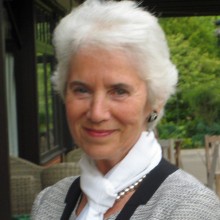Choose a character from the past (it doesn’t have to be a famous person). Research that character and the time that they lived. Use the drama convention Visualisation to explore what it would be like to be that character. What would they hear? What would they see? Smell? Experience? Write a diary entry in role as your character.
My post is about a historic person rather than a character. Her name is  Grace Darling. She saved 18 people’s lives at sea off the coast of Bamburgh, Northumberland on one of the Farne Islands at just 22 years old. She was the first woman to be awarded for bravery by the RNLI. She is a heroine of her time.
Grace Darling. She saved 18 people’s lives at sea off the coast of Bamburgh, Northumberland on one of the Farne Islands at just 22 years old. She was the first woman to be awarded for bravery by the RNLI. She is a heroine of her time.
Today is the 7th September 1838. The weather is calm after the storm this morning.
Maybe some day someone will read my diary and read about what I have done on this day. Maybe I’ll be remembered for what I have achieved.
The day started as it normally did for a 22 year old 5 foot 2 woman who is the daughter of a lighthouse keeper in a family household. I helped mother with the laundry after deciding what dress to wear. We are the same height and build. I then helped my father with cleaning the lighthouse. Our lighthouse is on the land but beside a lot of the Farne Islands which can be often covered by the strong waves of the North Sea, so a lighthouse is essential to help save the lives of those out on their boats. After the day was done we went to sleep, but being waking up early the next day to strong winds and rain battering against by window is something I will never forget.
It was 6am. I was unable to sleep so did what I normally do, admire the view of the sea. It was extremely choppy. In the distance I could see a ship on the Harcar Rock and I woke Father uo straight away. We found our telescope to see if we could see any life on the rock. It wasn’t until 7am that there was enough light and we could both see movement in the distance. The lifeboat had been called for already from Sunderland, but I knew it would take at least three hours for it to arrive. It was at that moment I knew we needed to get our 20 foot rowing boat and rescue the survivors, Father was clearly nervous but he knew the water and he knew the rocks. We rowed for a mile, tackling the wind and spray from the sea. But we made it to the SS Forfarshire.
While Father helped those onto the boat I had to try and keep it balanced. It was so windy and the water was so rough. I had to comfort Mrs Dawson. Both of her children were lost this morning. There were still two men on the rock but father went back for them and the remaining bodies of those who did not survive. But we did it. We saved 18 lives.
The ship was built in Dundee by Thomas Adamson in 1834. The ship was on a voyage from Hull back up to Dundee when it hit the rock. It saddens me that this ship was only a few years old and never made it back to its home city.
This is a day I will never forget. I hope people will be proud of me.
Goodbye for now,
Grace.
The reason I chose the character for this post was because I visited the Grace Darling museum in Bamburgh this weekend and was utterly amazed at the bravery of this woman. She was only a couple of years older than me at the time of the rescue and is also the same height as me. When I was there and saw the size of the boat she rowed I was utterly amazed. I want to be able to teach pupils about Grace when I have my own class and be able to adapt her story to drama lessons. Pupils will be able to show so many emotions through this story: fear, sadness, hope and happiness.
As the ship was also made in Dundee it will allow pupils to learn about the shipbuilding industry Dundee was known for and be able to add more characters into their dramatisation.



 everyone really enjoyed! It was so good to be able to tell them about my life in Scotland and at university and teach them about a variety of things such as education, politics and Scottish culture. I also answered questions that they had. It was so funny seeing their reactions to the fact that we have free health care and university tuition in Scotland as that has never been a thing here and something that they are very envious of!
everyone really enjoyed! It was so good to be able to tell them about my life in Scotland and at university and teach them about a variety of things such as education, politics and Scottish culture. I also answered questions that they had. It was so funny seeing their reactions to the fact that we have free health care and university tuition in Scotland as that has never been a thing here and something that they are very envious of!









 There are small things such as being able to sing along to the jingle of an advert or knowing the company’s tagline. But, advertising definitely leads to “Mum, can I get that?” to which my mum would normally reply “sure, if you have the money,” which I never normally did.
There are small things such as being able to sing along to the jingle of an advert or knowing the company’s tagline. But, advertising definitely leads to “Mum, can I get that?” to which my mum would normally reply “sure, if you have the money,” which I never normally did. age have a large purchase influence and can successfully negotiate purchases through what advertisers call the “nag factor” or “pester power” (McNeal, 1999). From this, children will continue to ask, want and get foods that they see on television and around them in supermarkets and, therefore, this will contribute to childhood obesity if parents choose to “give in”.
age have a large purchase influence and can successfully negotiate purchases through what advertisers call the “nag factor” or “pester power” (McNeal, 1999). From this, children will continue to ask, want and get foods that they see on television and around them in supermarkets and, therefore, this will contribute to childhood obesity if parents choose to “give in”.
 member of the Pizza Hut team. I feel as though this is recognised through little things
member of the Pizza Hut team. I feel as though this is recognised through little things




 HutLovers. I looked through all the email promotions from the year so far and put each banner onto a KeyNote presentation which she will use for her future work.
HutLovers. I looked through all the email promotions from the year so far and put each banner onto a KeyNote presentation which she will use for her future work.



















 always remember being that child who was sat beside a pupil, who I always thought, was smarter than me and felt I needed to look at their answers just so I didn’t get in trouble for not completing the work or having too many wrong answers. Of course this was not the case. The teacher I had would always give me the support I needed- it was just a fear of being embarrassed that I always seemed to have.
always remember being that child who was sat beside a pupil, who I always thought, was smarter than me and felt I needed to look at their answers just so I didn’t get in trouble for not completing the work or having too many wrong answers. Of course this was not the case. The teacher I had would always give me the support I needed- it was just a fear of being embarrassed that I always seemed to have. were put into groups to try and get a good understanding of the term. So, Hannah Gibson, Kathleen Mullen, Michelle Mackie and I have written a report on our findings.
were put into groups to try and get a good understanding of the term. So, Hannah Gibson, Kathleen Mullen, Michelle Mackie and I have written a report on our findings.
 application process. This experience was one which was wanted by so many, so I was honoured to be one of the two chosen and I am now a Holocaust Ambassador for the Trust. I feel that writing this post today is very important as I want to inform people what I saw and how I felt. My main aim with this is to ensure that people never forget about the Holocaust and we must try our best to learn and teach about the events to ensure something like it will not happen again.
application process. This experience was one which was wanted by so many, so I was honoured to be one of the two chosen and I am now a Holocaust Ambassador for the Trust. I feel that writing this post today is very important as I want to inform people what I saw and how I felt. My main aim with this is to ensure that people never forget about the Holocaust and we must try our best to learn and teach about the events to ensure something like it will not happen again. he thing that struck me most in Eva’s testimony was the fact that no one noticed that Eva’s mother was pregnant until she began to actually give birth. This helps highlight the sheer strength and bravery of her mother. In Eva’s story, all her mother’s family were separated from one another, like many others who lost their lives and loved ones, yet Eva’s testimony helps to highlight that each person involved in the Holocaust was a human being with their own extremely different experience and her story stuck in my mind while we were in the camps. On this day each year I think of Eva as 15 members of her family were murdered in Auschwitz Birkenau.
he thing that struck me most in Eva’s testimony was the fact that no one noticed that Eva’s mother was pregnant until she began to actually give birth. This helps highlight the sheer strength and bravery of her mother. In Eva’s story, all her mother’s family were separated from one another, like many others who lost their lives and loved ones, yet Eva’s testimony helps to highlight that each person involved in the Holocaust was a human being with their own extremely different experience and her story stuck in my mind while we were in the camps. On this day each year I think of Eva as 15 members of her family were murdered in Auschwitz Birkenau.
 Nazis, it made all prisoners seem the same. Though I have given statistics for a lot of the belongings we saw, it is extremely impersonal and through seeing them for myself I know that each prisoner in Auschwitz was their own individual with their own families, friends, homes and backgrounds.
Nazis, it made all prisoners seem the same. Though I have given statistics for a lot of the belongings we saw, it is extremely impersonal and through seeing them for myself I know that each prisoner in Auschwitz was their own individual with their own families, friends, homes and backgrounds.

 cal theatre which is still a huge love of mine. I feel as though I’m a much stronger singer than I am a dancer so I think this is why is preferred this kind of performance and expressive art.
cal theatre which is still a huge love of mine. I feel as though I’m a much stronger singer than I am a dancer so I think this is why is preferred this kind of performance and expressive art.



 o important as a teacher to know as I must be able to relate to pupils and their past.
o important as a teacher to know as I must be able to relate to pupils and their past. d ‘affectionless psychopathy.’ Highlighting that attachment is so serious in the development of a child for the issues that will occur in the rest of their life.
d ‘affectionless psychopathy.’ Highlighting that attachment is so serious in the development of a child for the issues that will occur in the rest of their life. the subject. I felt a sense of confidence I do not usually have when writing an academic piece. I feel that this highlights the positive aspect of feedback. But there was obviously negative feedback too. However, it was helpful and I knew what I needed to do for next time.
the subject. I felt a sense of confidence I do not usually have when writing an academic piece. I feel that this highlights the positive aspect of feedback. But there was obviously negative feedback too. However, it was helpful and I knew what I needed to do for next time.